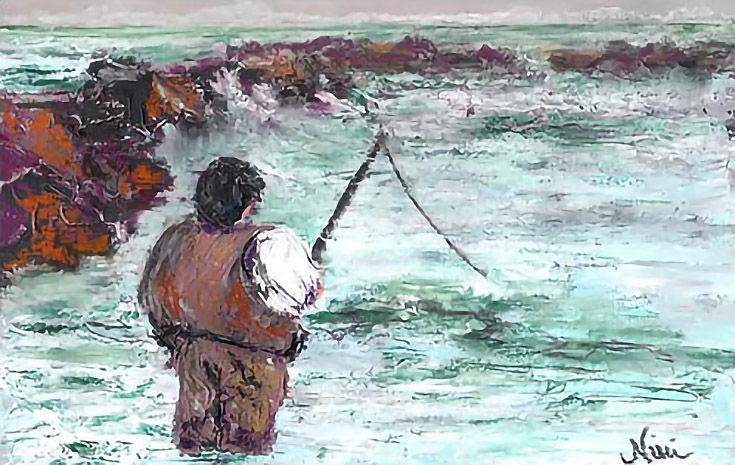If you enjoy painting with pastels in a loose style, but you want just a little more texture in your finished pieces, you might want to try adding an acrylic underpainting your next soft pastel painting!
Acrylic paint dries quickly and binds easily to other mediums when used in mixed media pieces, which makes it ideal for this type of technique.
Besides acrylic paints, for this project you’ll also need durable paper (I use Canson Canva-Paper, but any high quality watercolor or mixed media paper will work), a palette knife, painting board, painter’s tape, soft/chalk pastels (the less expensive the better), and fixative.
Step 1. Sketch out your composition
Tape down your paper and cover it with acrylic paint, using a color that will set the mood of your piece. Once the acrylic has dried completely, sketch out your basic composition with pastels.
Step 2. Create a layer of textured acrylic paint
Using your palette knife, create a basic acrylic painting to show your values and composition. Take as much care with your knife strokes as you would in a regular palette knife painting—the paint strokes will add texture once the pastel is applied.
In this stage, use plenty of darks, since the lighter pastels will look stronger over dark undertones. Set your painting aside with ample time to dry (remember, thicker paint will mean longer drying time).
Step 3. Layer chalk pastels over the acrylic paint
After your acrylic layer has dried, begin to work in the chalk pastels to define objects and create a color scheme.
Use your darkest colors first, and spray with a layer of fixative (if you’re comfortable using it). Set painting aside and allow the fixative to dry before moving on to step 4.
Step 4. Add final touches of light and texture
For your final layer, add the lightest lights and brightest spots of color to your painting using pastels. As you do, make sure to scrape your pastels over the heavier, textured strokes of acrylic, making those textures “pop” from the canvas.
Your pastel dust will naturally bind to the acrylic, so a final layer of fixative is not necessary (unless you want to darken the final colors one more time).
When you’re done, sign your mixed media painting, frame it under glass, and enjoy!
This post may contain affiliate links.




